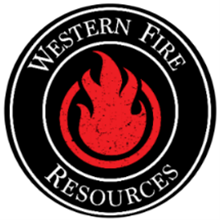Understanding where wildfire risk occurs is only half of the battle. Selecting fuels treatments that are designed to interrupt primary wildland fire flow paths can be a powerful way to apply fuels mitigation money in the most cost-effective way. We can propose specific fuels treatments, adjust fuels data layers to represent these post-treatment conditions, and then re-model the same ignitions in order to quantify the likely effects. This can be done multiple times to identify the most cost-effective fuels treatments that will likely result in the desired changes in fire behavior. Modelling such as this will carry a lot of weight when competing for limited fuels grant money. They can also be presented to local federal land management agencies during scoping periods for public comment on land management plan revisions.
Example Fuels Treatment
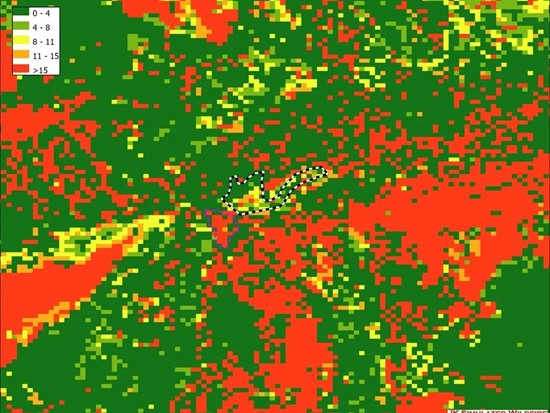
In this pre-treatment landscape, town (depicted by a black and white border) is flanked to the southwest by an area where fire behavior on a high-end fire weather day exhibits extreme flame lengths (>15 feet).
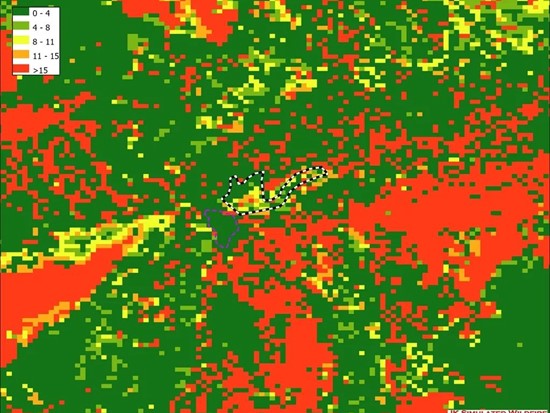
It was decided to conduct a fuels treatment inside the purple boundary consisting of altering the fuels from a TU5 – Very High Load, Dry Climate Timber-Shrub to a TL3 – Moderate Load Conifer Litter, reducing canopy cover to 50% or less, and limbing existing trees to 8 feet. This is predicted to reduce flame lengths to 4 feet or less and will reduce any torching and ember cast into town.
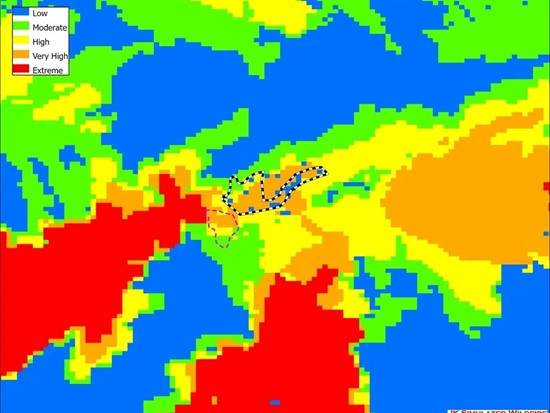
While predicted fire behavior in town will not be altered significantly by this fuels treatment without also implementing some Firewise concepts, the objective was to create fire behavior adjacent to town that is manageable by first responders. In the current landscape, burn probability in town is very high prior to any fuels treatments, due to the readily burnable fuel adjacent to town.
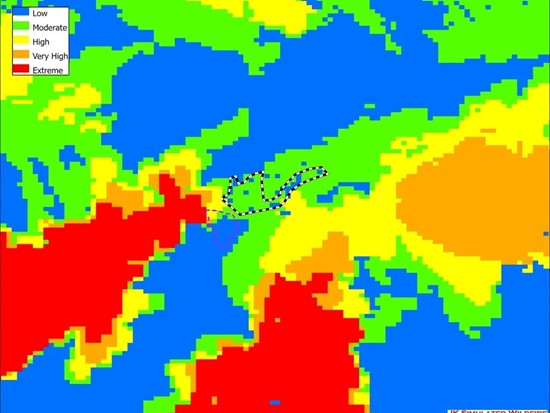
Following treatment, not only is the fire behavior much reduced in areas adjacent to town, but burn probability has also been greatly reduced as a result. This helps to mitigate the hazards created by some homeowners who do not follow Firewise principles because fire is less likely to reach those properties.
